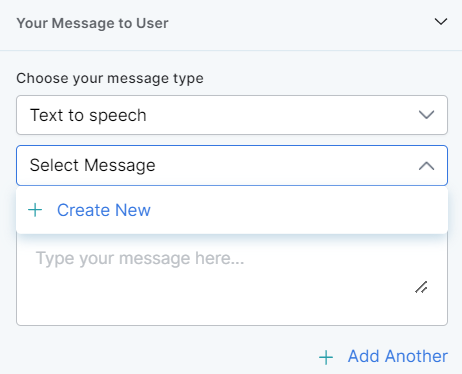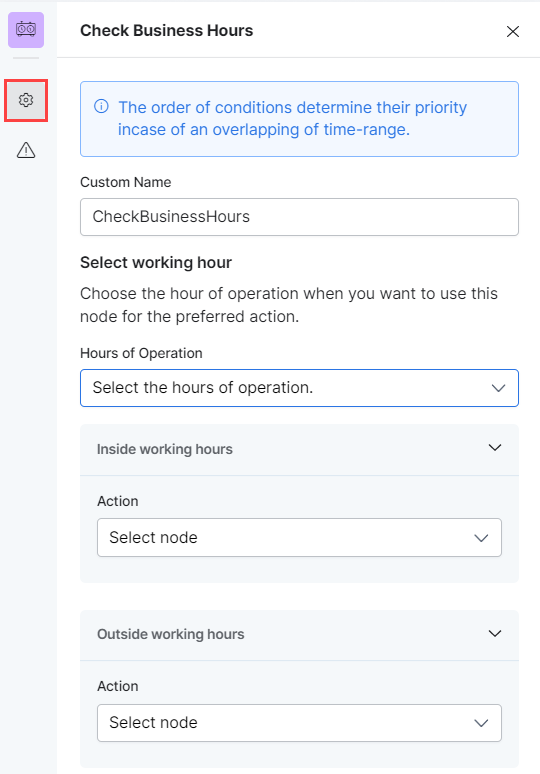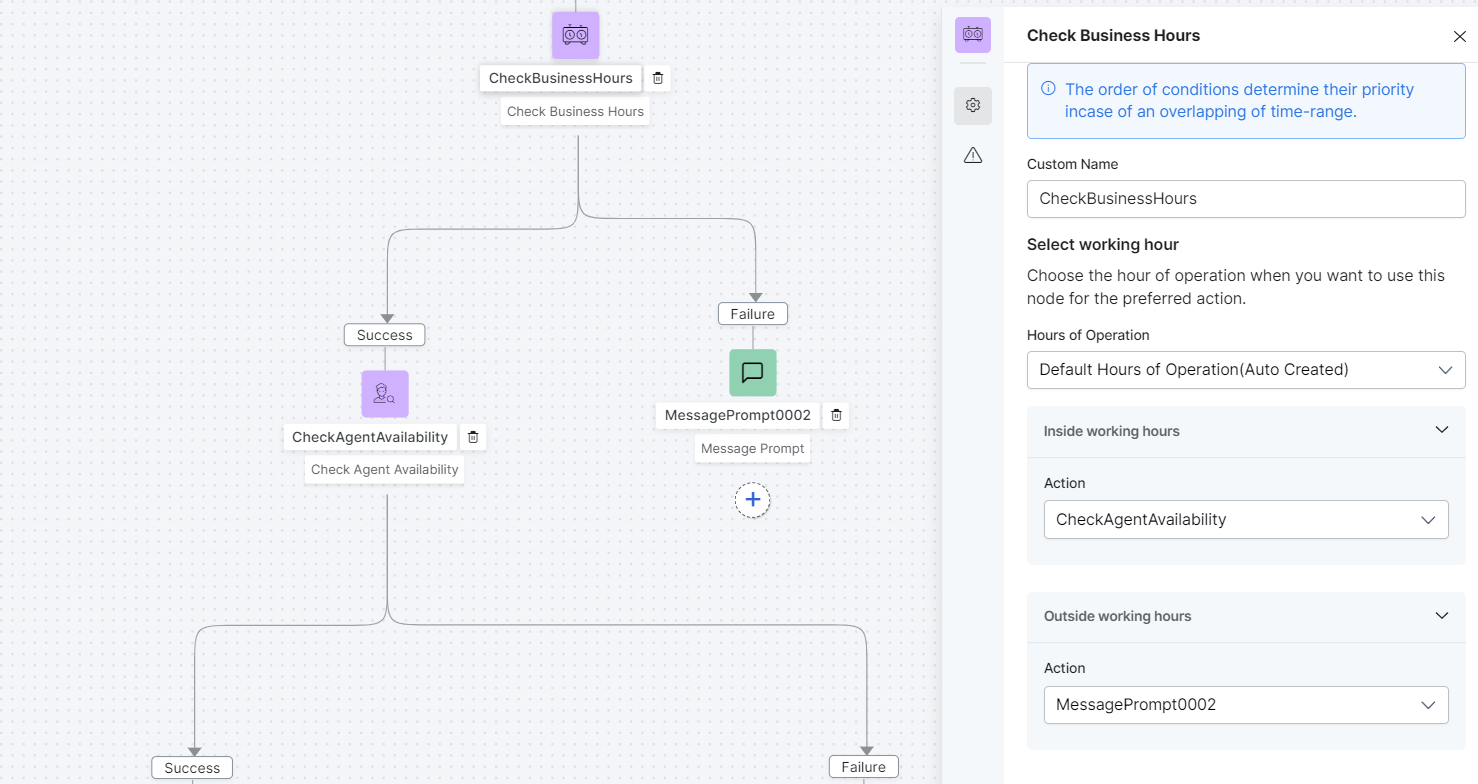This node is used to select the working hours and decide the next Action node to trigger when a customer query is incoming during business hours or outside of them.
To configure Check Business Hours, set up the following:
General Settings
- Click the General Settings icon and provide the Custom Name by which to identify the node later.
- Under Hours of Operation, select the hours of operation from the drop-down. Default Hours of Operation is auto created. You can add more hours of operation, should you need to.
- For Inside working hours, you can define a success path by selecting a node from the Action dropdown list. The flow is directed to the selected node from the current node if a customer query is incoming during working hours.
- Similarly for Outside working hours, you can define the path by selecting a node from Action dropdown. The flow is directed to the selected node from the current node if a customer query is incoming outside working hours.
Once setting up the node, your flow might look similar to the example below:
Error Handling
Use this section to handle system errors during customer interactions.
- Your Message to User: The message that will be played or displayed to the customer. Select one of the following options from under Choose your message type:
- Text to speech: This option allows you to transcribe text to speech. Type the text to be transcribed in the textbox or select an already configured message.
- Create a new prompt message to be played out for the Text to Speech message type by clicking + Create New. Enter a name for your message, type its contents and select the language.
- Define multiple message types for the prompt message to be played to the customer by clicking + Add Another. In this case, one message will be randomly selected and played during runtime.

- Text to speech: This option allows you to transcribe text to speech. Type the text to be transcribed in the textbox or select an already configured message.
- Audio File: You can type a new message to be played to the customer in the text field or click + Upload New to upload an audio file (.mp3 or .wav format) with the message to be played.

- Link: Click + Create New to add the text of the message you want to play to the customer and insert the URL of an audio file in .mp3 or .wav format. Click + Add Another to add another message URL.

- Action: Select the node to which you want to direct the error handling flow and define the system behavior. Either select a node type to create the node or identify and select an existing node.


